ACCELERATED ORTHODONTICS (PROPEL) / DIODE LASER TREATMENT / APPLIANCES
(FORSUS, EXPANDER, RETAINER, ELASTICS) / TEMPORARY ANCHORAGE DEVICES / SURGICAL ORTHODONTICS
PROPEL ORTHODONTICS
A fast, gentle way to accelerate your orthodontic treatment.
We are excited to offer accelerated orthodontic treatment with PROPEL Orthodontics! If you’re interested in improving the aesthetics of your smile but are put off by the thought of having to spend months or even years in braces, PROPEL could be right for you. This state-of-the-art technology speeds up tooth movement, and while each patient varies, many can now have their orthodontic treatment completed in less than a year.
So how does PROPEL work?
In the past 20 years, new treatment options have made our patients’ orthodontic experience more efficient, but not necessarily faster. That is, until now!
PROPEL works with your own biology by stimulating the bone surrounding your teeth, and helping the teeth to move faster and more predictably into their ideal position. This allows you to see your new smile faster and requires fewer visits to our office.
PROPEL can be completed right here in our office and does not require any invasive surgical procedures. Additionally, PROPEL treatment involves very little discomfort. There is zero recovery time and you will be able to return to your normal daily routine immediately.
PROPEL can be used for approximately 80% of patients who receive orthodontic treatment, and can be used in conjunction with any treatment type, including TADs, clear aligners, clear braces, and conventional metal braces. To learn more, contact our office!
DIODE LASER TREATMENT
Diode laser treatment offers several benefits to patients receiving orthodontic care. By using a specialized diode laser, we are able to remove excess gum tissue safely and effectively in order to expose more of the tooth’s surface for better sesthetics and function.
Your gum tissue serves as a “frame” for your teeth: Orthodontic lasers are used to sculpt the gums around the teeth in a way that helps improve the overall appearance of your smile. The best part of laser treatment? In most cases, there is no need for needles! We simply apply a topical anesthetic to the gum tissue being treated, so all you feel is the slight movement of the laser tip.
Ideal Bracket Placement
It is vital to place the braces on the perfect spot for each tooth. If your teeth seem small, it may simply be that they are covered by too much gum tissue. It may also be that you have a tooth that is erupting slower than the other teeth.
Both too much gum tissue and slow-developing teeth can make it difficult to place the braces in the right spot to achieve proper tooth movement. If this is the case, Dr. Skanchy may elect to use a diode laser, a painless procedure, to remove excess gum tissue.
Impacted Teeth
Impactions refer to teeth that haven’t erupted properly through the gums. By using laser treatment, we can assist a tooth’s eruption without the need to wait months for the tooth to erupt on its own, or to refer an expensive surgical procedure.
Aesthetic Gingival Recontouring
Following the removal of your braces, our team may recommend recontouring your gum line to maximize the aesthetics of your smile. Aesthetic gingival recontouring is a procedure to reshape the gum line and improve the aesthetics of your smile by exposing more of your teeth.
We will use a laser to remove excess gum tissue around the upper teeth to make them look longer. If the gum line is uneven, aesthetic gingival recontouring can also sculpt it to produce a more symmetrical, balanced smile.
TYPES OF APPLIANCES
ELASTICS (RUBBER BANDS)
Wearing elastics (or rubber bands) improves the fit of your upper and lower teeth. Wear rubber bands as instructed, and remember that they work far more efficiently if they’re worn as prescribed.
FORSUS™
The Forsus Fatigue Resistant Device is an alternative to headgear which promotes growth in adolescents, helps to eliminate excessive overbites, improves the fit of teeth, and possibly prevents the need for jaw surgery.
HEADGEAR
Headgear is used to treat patients whose teeth are in an overbite, with the upper jaw forward of the lower jaw, or an underbite with the lower jaw forward of the upper jaw. Headgear gently “pulls” on your teeth to restrict further forward growth of your upper teeth and jaw. We rarely need to use headgear at our office.
HERBST® APPLIANCE
The Herbst® appliance reduces overbite by encouraging the lower jaw forward and the upper molars backward. This fixed appliance is used mostly for younger, growing children and is worn for about 12 to 15 months.
PALATAL EXPANDER
The palatal expander “expands” (or widens) your upper jaw by putting gentle pressure on your upper molars each time an adjustment is made. We will instruct you about when and how to adjust your expander. When you achieve the desired expansion, you will wear the appliance for several months to solidify the expansion and to prevent regression.
POSITIONERS
Positioners complete the final tooth movements in your orthodontic treatment. With your full cooperation, you should only need to wear the positioner appliance for four to eight weeks.
RETAINERS
Retainers may be removable or fixed. They hold your teeth in their new, correct positions after they have been straightened. Our office will instruct you on how to care for your retainer and about the duration of the wear. Wearing your retainer as directed is crucial to prevent regression of your treatment.
SEPARATORS OR SPACERS
Separators are little rubber doughnuts that may be placed between your teeth to push them apart so orthodontic bands may be placed during your next appointment. The separators will be removed before we place the bands. Separators do not mix well with sticky foods, toothpicks, or floss.
TADs (TEMPORARY ANCHORAGE DEVICES)
Temporary anchorage devices, or TADs, are small titanium anchors used in certain orthodontic cases to help achieve quicker tooth movement with more efficiency and comfort. TADs may be used in addition to braces or as an alternative to headgear.
How are TADs placed?
A strong anesthetic is used to numb the gum tissue and jaw surrounding the area where the TAD will be placed. Once the area is numb, we will gently place the TAD through the gum tissue and firmly into the jawbone. The placing is quick, and may be over before you know it. While your doctor is placing the TAD, you may feel slight pressure, but within a day, you will no longer be able to feel it. Your TAD is removed once your treatment is complete, or when it is no longer needed to help straighten your teeth. Removal is a comfortable procedure that takes just a few minutes.
What can I do to relieve discomfort caused by my TAD?
If you feel any discomfort from having your TADs placed, Tylenol® is recommended to help relieve your pain. If you continue to experience discomfort days after your treatment, please contact our office as soon as possible.
How can I keep my TAD clean?
A TAD can be cleaned the same way you clean your braces: by brushing your teeth at least three times a day. When your TAD is placed, we will also provide you with an antimicrobial mouthwash that you will need to use twice a day.
If you have questions about TADs, please contact our practice. We will be able to answer any of your questions and provide you with detailed information about your orthodontic treatment.
SURGICAL ORTHODONTICS
Surgical orthodontics, also known as orthognathic surgery, is a type of orthodontic treatment used to correct severe cases that include bad bites, jaw bone abnormalities, and malocclusion. Oral and maxillofacial surgery is one of the nine recognized dental specialties. It focuses on treating complex craniofacial cases that involve the mouth, jaw, face, and skull. If you need surgical orthodontics, our office will work with an oral and maxillofacial surgeon to ensure you receive the best care possible.
When might surgical orthodontics be needed?
Surgical orthodontics may be used to treat adults with improper bites or other aesthetic concerns. Typically, jaw growth stops by age 16 in females and 18 in males. In order to receive orthognathic surgery, the jaw must be done growing.
The need for surgical orthodontics occurs when the jaws do not line up correctly, and a proper bite cannot be achieved with orthodontic treatment alone. Orthognathic surgery will help to align the jaw properly, and orthodontic braces will be used to move the teeth into their proper position.
How do I know if I need orthognathic surgery?
We can tell you if orthognathic surgery is needed as part of your treatment. Depending on the severity of your case and the alignment of your jaw, you may or may not need surgery.
How does orthognathic surgery work?
An oral and maxillofacial surgeon will perform your orthognathic surgery in a hospital. The surgery can take several hours, depending on each individual case. Once the surgery is complete, you will have about a two-week rest period.
Since the procedure is a major treatment, we recommend that you schedule some time away from work and school during the healing process. After your jaw has healed, we will once again “fine-tune” your bite. After surgery, you will have to wear braces. Most braces are removed within six to 12 months following surgery.
After your braces are removed, you will wear a retainer to help maintain your new smile.
What are the risks associated with orthognathic surgery?
As with any major medical surgery, there may be certain risks of having orthognathic surgery. However, the procedure is not new, and it has been performed for many years in clinics and hospitals. If you’re concerned about an upcoming treatment with orthognathic surgery, please contact our practice and let us know. We are happy to answer any questions you may have, and provide you with any additional information. Your comfort is important to us.
What are the rewards of having orthognathic surgery?
For many patients, the most important reward of having orthognathic surgery is achieving a beautiful, healthy smile that lasts a lifetime. Whether you need orthodontic treatment to correct a bad bite, malocclusion, or jaw abnormality, orthognathic surgery can help restore your confidence and leave you smiling for many years to come.






